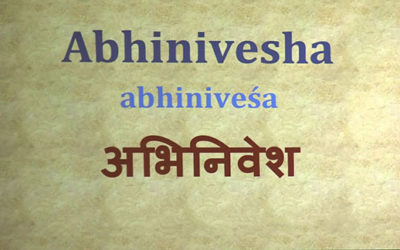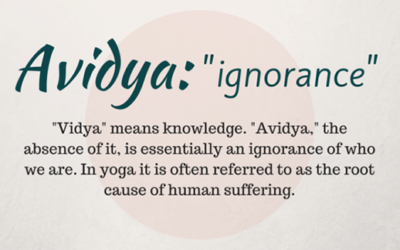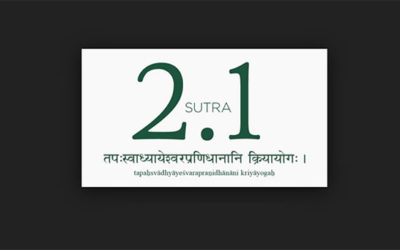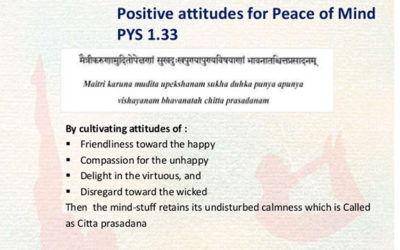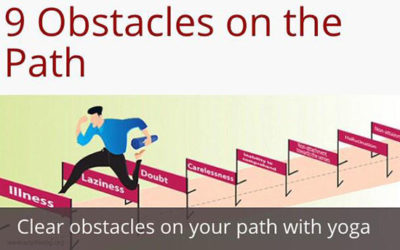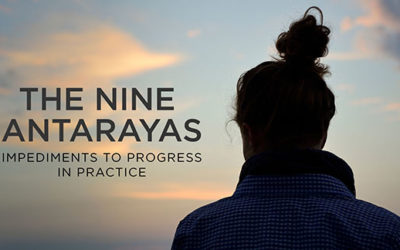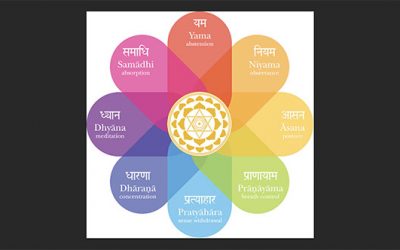Rev. Jaganath, Integral Yoga Minister and Raja Yoga master teacher, has spent a lifetime delving into the deepest layers of meaning in Patanjali’s words within the Yoga Sutras. Our series continues with sutras: 2.9 through 2.11. In these sutras, Patanjali addresses...
Patanjali’s Words: Raga and Dvesha — Attachment and Aversion
Rev. Jaganath, Integral Yoga Minister and Raja Yoga master teacher, has spent a lifetime delving into the deepest layers of meaning in Patanjali’s words within the Yoga Sutras. Our series continues with sutras: 2.6 through 2.8. Here, Patanjali elucidates further on...
Patanjali’s Words: Avidya—Ignorance
Rev. Jaganath, Integral Yoga Minister and Raja Yoga master teacher, has spent a lifetime delving into the deepest layers of meaning in Patanjali’s words within the Yoga Sutras. Our series continues with sutras: 2.4 and 2.5. Here, Patanjali elucidates further on the...
Patanjali’s Words: The Five Kleshas (Causes of Suffering)
Rev. Jaganath, Integral Yoga Minister and Raja Yoga master teacher, has spent a lifetime delving into the deepest layers of meaning in Patanjali’s words within the Yoga Sutras. Our series continues with another foundational sutra: 2.3. Here, Patanjali outlines the...
Patanjali’s Words: Kriya Yoga
Rev. Jaganath, Integral Yoga Minister and Raja Yoga master teacher, has spent a lifetime delving into the deepest layers of meaning in Patanjali’s words within the Yoga Sutras. Our series leaps ahead to Chapter 2 to its very first sutra. In sutra 2.1, Patanjali...
Patanjali’s Words: Pathways to a Calm, Clear Mind
Rev. Jaganath, Integral Yoga Minister and Raja Yoga master teacher, has spent a lifetime delving into the deepest layers of meaning in Patanjali’s words within the Yoga Sutras. Our series continues with the 34th–39th sutras of Chapter 1. In sutra 1.33, Patanjali...
Patanjali’s Words: The Four Keys
Rev. Jaganath, Integral Yoga Minister and Raja Yoga master teacher, has spent a lifetime delving into the deepest layers of meaning in Patanjali’s words within the Yoga Sutras. Our series continues with the 33rd sutra of Chapter 1. This is a key sutra taught by Swami...
Patanjali’s Words: Recognizing and Clearing the Obstacles
Rev. Jaganath, Integral Yoga Minister and Raja Yoga master teacher, has spent a lifetime delving into the deepest layers of meaning in Patanjali’s words within the Yoga Sutras. Our series continues with the 31st and 32nd sutras of Chapter 1 in which Patanjali further...
Patanjali’s Words: Impediments on the Path
Rev. Jaganath, Integral Yoga Minister and Raja Yoga master teacher, has spent a lifetime delving into the deepest layers of meaning in Patanjali’s words within the Yoga Sutras. Our series continues with the 30th sutra of Chapter 1 in which Patanjali begins to describe...
The Heart of Concentration According to Patanjali
The aim of Patanjali’s Yoga system is to keep the mind one-pointed on any object or idea which would remind you of a higher idea that will broaden your outlook, elevate your mental attitude and, ultimately, your life. He encourages the student to take up any object...
Real Contentment
Santosha, the second niyama in the Raja Yoga system, means contentment. We also have a saying in the West that “Contentment is golden.” Why? Contentment is golden because it doesn’t depend on the things around you, the things that you have. Whenever I think of...
The Yamas and Niyamas
Deborah Adele says that the yamas and niyamas (the ethical precepts that are the first two foundational limbs in Patanjali’s eight-limbed system of classical Yoga) offer us tools to help us stay centered in the midst of the ups and downs of life. She’s written a book...
Vibhuti Pada: Entering the Oneness of Time
Ruth Lauer Manenti (affectionately known as "Lady Ruth" in the Jivamukti Yoga tradition) has been offering her students “dharma talks”—stories from her life that accompany her classes and represent the yogic commitments to ahimsa (non-violence), compassion and...
Four Locks, Four Keys: A Simple Approach to Relationships
When I first studied Raja Yoga, or Patanjali’s Yoga Sutras, in my Yoga Teacher Training Class of 2001 at the Integral Yoga Institute, New York City, I clearly remember Swami Ramananda saying something like, “First your mind talked you into eating the ice cream, then...
Helpful Hints for the Practice of Yama and Niyama
The first two limbs of Raja Yoga are called yama and niyama. They consist of five precepts each and constitute the ethical foundation of Yoga. Sri Swami Satchidananda said: “All spiritual life should be based on these principles. They are the foundation stones without...
Practice, Study, or Devotion: Which Path to Take?
In an another article, (Inside the Yoga Sutras: What Do You Believe) we explored the five different types of thought whirlwinds, vritti, that were categorized as either painful or painless. This examination of Patanjali’s Yoga Sutras (sutras 5-11) in the first Pada...

